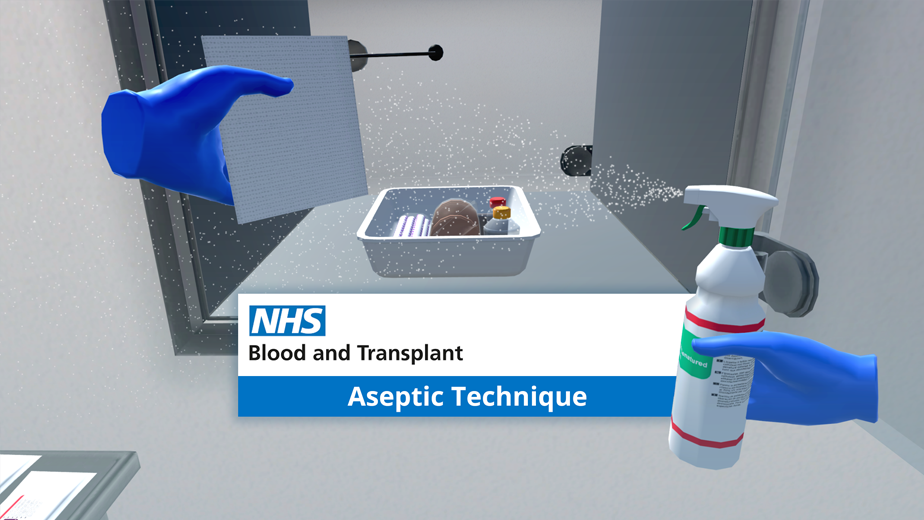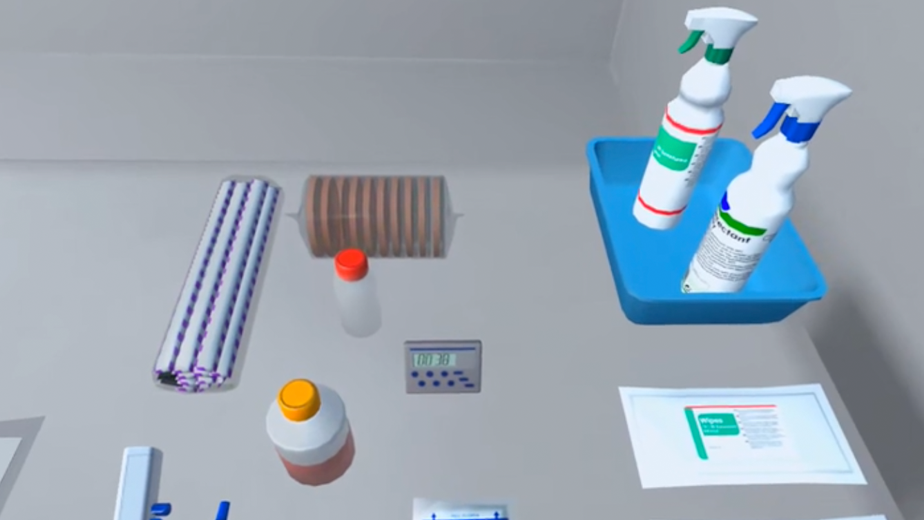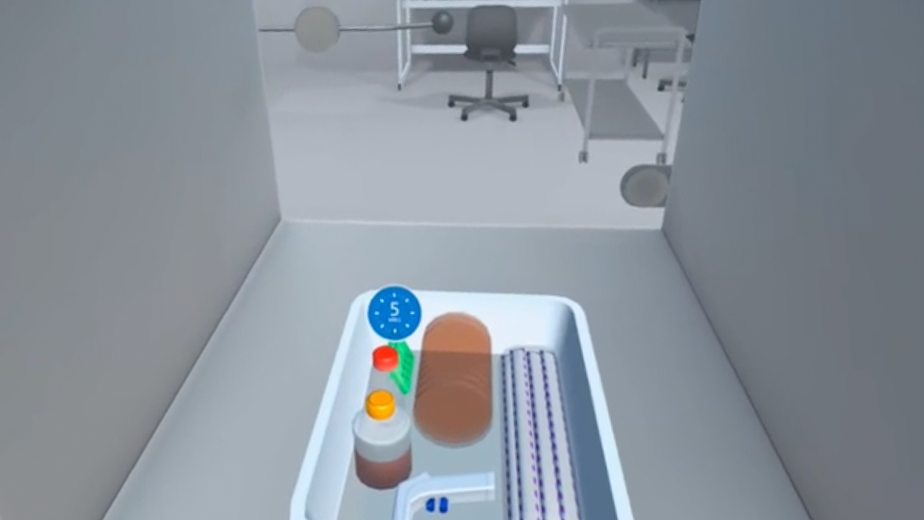This is one of a pair of VR projects we created for NHS Blood and Transplant (NHSBT) on clean room procedure. While the Clean Room VR experience enables users to practice end to end clean room procedure, from gowning to exiting the room and degowning, this experience focuses on the asceptic techniques to be followed while in the clean room.
NHSBT is the provider of blood and transplantation services to the National Health Service in the UK. Its work includes managing donation, storage and transplantation of blood and organs as well as researching new treatments and processes.
If cell cultures become contaminated because staff do not correctly apply aseptic techniques, those cultures can no longer be used, which has a significant time and cost implication for ongoing work. In the worst-case scenario, a contaminated culture used to treat a patient could result in death. Patient safety is paramount, so it’s important that clean room users have opportunities to practise aseptic techniques before they begin working on in the real world environment.
In this experience, an expert colleague guides the learner through the five stages of aseptic technique:
Each of these stages guides the learner through the correct procedure. The learner must ensure they carry out each requested task thoroughly to avoid potential contamination. At the end of each stage, the learner will receive a rating out of three stars based on how well they completed each action.
The procedures to be practised by the learner include:
As far as possible, the simulation gets the learner to carry out the physical action, for example spraying or wiping a surface, or pressing the trigger on a pipette to control the flow into or out of the device.
Where actions are not practical to carry out with VR controllers, for example removing and replacing caps on bottles and flasks, then the learner selects icons to do this at the appropriate time.
The ability to practise these techniques in VR is invaluable given the scarcity of resources, and the difficulty of practising in a busy real-world environment.



We’re always happy to talk to you about how immersive technologies can engage your employees and customers. If you have a learning objective in mind, or simply want to know more about emerging technologies like VR, AR, or AI, send us a message and we’ll get back to you as soon as we can.